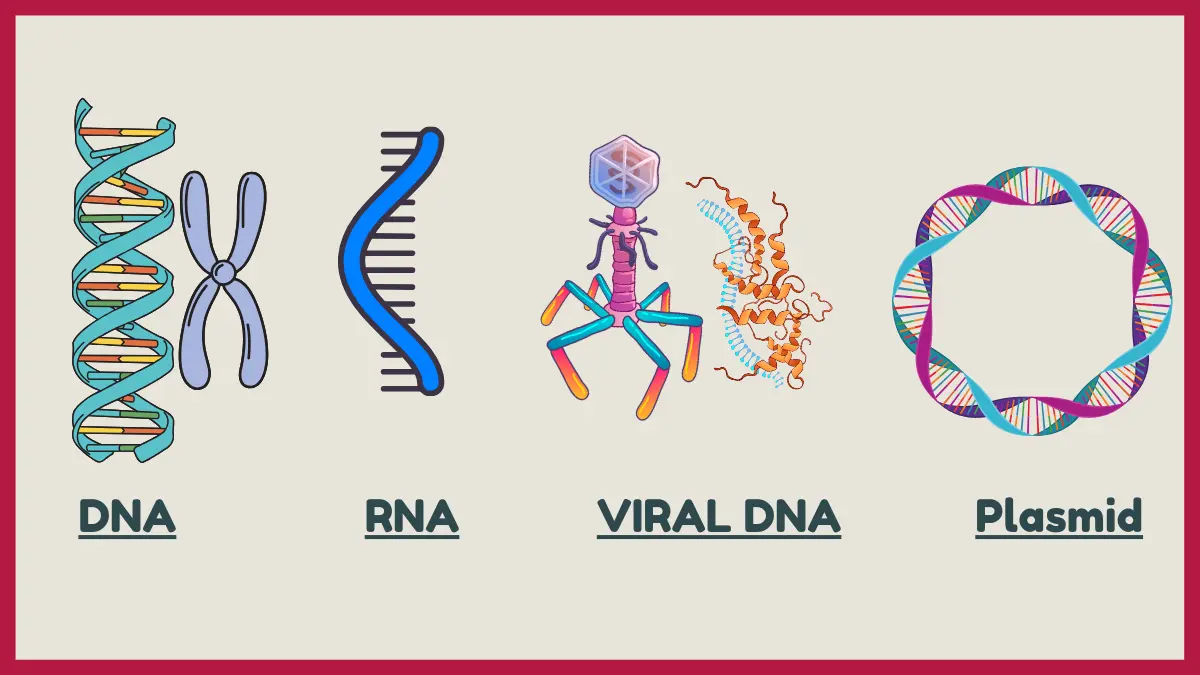Nucleic acids are essential biomolecules that store and transmit genetic information. They are composed of nucleotides, which are units consisting of a nitrogenous base, a sugar, and a phosphate group.
DNA, RNA, viral DNA, Plasmids are a few examples of nucleic acids.

Examples of Nucleic Acids
Here are some Examples of Nucleic Acids:
1. DNA
DNA, or deoxyribonucleic acid, is a nucleic acid that contains the genetic instructions for the development and function of living organisms. DNA is made up of nucleotides consisting of a deoxyribose sugar, a phosphate group, and one of four nitrogenous bases – adenine, thymine, cytosine, and guanine.
DNA typically exists as a double-stranded helix held together by hydrogen bonds between complementary base pairs. It provides the code for making essential proteins required for cellular processes.
2. RNA
RNA, or ribonucleic acid, is a nucleic acid that helps decode, regulate, and express genes. Like DNA, RNA is made of nucleotides containing a ribose sugar, phosphate group, and nitrogenous bases. However, RNA contains the base uracil instead of thymine.
Different types of RNA play important roles in protein synthesis, gene regulation, and other cellular functions. For example, mRNA carries genetic information from DNA to ribosomes, while tRNA brings amino acids to ribosomes for protein production.
3. Viral DNA/RNA
Viruses contain genomes made up of either DNA or RNA. For example, the smallpox virus has a linear double-stranded DNA genome, while the influenza virus has a segmented single-stranded RNA genome.
Viral nucleic acids contain the genetic information that encodes for capsid proteins, envelope glycoproteins, and viral proteases. The genome is enclosed within a protein coat and sometimes a lipid envelope to form the complete viral particle. Viral DNA/RNA provides the instructions for replicating the virus within host cells.
4. Plasmid DNA
Plasmids are circular DNA molecules that exist separately from the chromosomal DNA in bacterial cells. Plasmids can replicate independently and often encode for beneficial functions like antibiotic resistance.
Plasmids are used as cloning vectors to insert foreign DNA and produce recombinant bacteria for research or industrial applications. Plasmid DNA remains stable and heritable, making it a useful tool for genetic engineering.
5. MicroRNA
MicroRNA (miRNA) is a small, non-coding RNA molecule that regulates gene expression. It binds to complementary sequences on mRNA, preventing translation into protein. MiRNAs play important roles in various biological processes, including development, cell differentiation, and disease.

